🌐 Societal
View all
🌐 Building Systemic Intelligence: A Critical Capacity to Understand Today's Complex Challenges
"Anyone who aspires to make observations about mankind should look upon the human scene as from some lofty height." — Marcus Aurelius
The recent global supply chain disruptions provide a perfect illustration of why we need systemic intelligence to address today's interconnected challenges. When COVID-19 hit, organizations responded individually - cutting production, reducing inventory, and laying off workers. While these decisions made sense from each organization's perspective, they collectively amplified system-wide disruption, leading to shortages and inflation that we're still grappling with today.
“The world is a complex, interconnected, finite, ecological-social-psychological-economic system. We treat it as if it were not, as if it were divisible, separable, simple, and infinite. Our persistent, intractable global problems arise directly from this mismatch.”
—Donella Meadows
This is where systemic intelligence (SysQ) becomes essential. Rather than viewing problems in isolation, SysQ provides tools and frameworks to understand how different parts of a system interact across organizational boundaries. It helps us see the deeper structures driving complex problems, revealing crucial time delays and feedback loops that traditional analysis often misses.
THE EXTRA VALUE OF SYSTEMIC INTELLIGENCE
Systemic intelligence adds three critical dimensions to problem-solving and strategy creation:
Shared Understanding —
SysQ provides a common language and visualization tools (like stock-and-flow mapping) that help diverse stakeholders build shared mental models of complex systems. This shared understanding is crucial for effective collaboration across organizational boundaries.
Long-term Perspective —
By making time delays and feedback loops visible, SysQ helps organizations move beyond quick fixes to develop solutions that address root causes and consider long-term implications.
Collaborative Solutions —
Instead of optimizing individual parts, SysQ encourages stakeholders to consider the health of the entire system, leading to more effective collaborative responses to complex challenges.

BUILDING SYSTEMIC INTELLIGENCE CAPACITY
For NGOs and communities looking to develop systemic intelligence, I recommend starting with these key practices:
Build Shared Maps —
Create visual representations of the system you're trying to understand. Focus on identifying key resources, flows, and feedback loops that generate current outcomes.
Focus on Physics —
Pay attention to the actual resources and constraints in your system - what I call the "physics." This helps ground discussions in reality rather than assumptions.Look for Time Delays —
Identify where significant delays exist between actions and their effects. This understanding is crucial for developing realistic implementation timelines and managing expectations.
Foster Cross-boundary Dialogue —
Create regular opportunities for stakeholders from different parts of the system to share perspectives and develop shared understanding.
MAKING SENSE OF SOCIETAL ISSUES
Through my upcoming Substack series, I'll be helping readers develop their systemic intelligence capacity by exploring real-world examples and providing practical tools for understanding complex societal issues. We'll examine cases like the supply chain disruptions, showing how systemic thinking reveals deeper patterns and more effective intervention points.
Each article will combine accessible explanations of systemic principles with practical applications to current challenges. My goal is to build a community of practitioners who can apply these tools to create more effective, sustainable solutions to our most pressing societal issues.
In today's interconnected world, success requires more than just organizational excellence - it demands systemic intelligence to understand and manage complex interdependencies. I invite you to join me on this journey of building this essential capacity together.
NAVIGATING TODAY'S COMPLEX NEWS LANDSCAPE
In an era of information overload, systemic intelligence offers valuable tools for making sense of today's rapid-fire news cycle. Rather than viewing each headline in isolation, SysQ helps us understand how different events and trends interconnect and influence each other.
For example, when analyzing current geopolitical tensions, systemic thinking reveals how economic policies, resource constraints, and social dynamics create reinforcing feedback loops that can either escalate or de-escalate conflicts. This deeper understanding helps us move beyond simplistic narratives to grasp the full complexity of global events.
Pattern Recognition —
SysQ helps identify recurring patterns in seemingly unrelated events, revealing deeper systemic structures that drive similar outcomes across different contexts.
Multiple Perspectives —
By encouraging us to consider various stakeholders' viewpoints, SysQ provides a more nuanced understanding of complex social and political issues.
Future Implications —
Understanding systemic connections helps us better anticipate potential long-term consequences of current events and policy decisions.

THE CASE FOR SYSQ JOURNALISM — WHY WE NEED A NEW APPROACH TO COVERING THE “NEWS”
The increasingly complexifying, interconnected world is inscrutable to typical approaches to news gathering, analyzing and sharing — even in those rare cases where the news is analyzed. We need an approach that moves from merely reporting the news into a systemic sense-making approach that generates insight. In short, we need to surface above the ocean of news “events”, moving from data to information to insight.
SysQ Journalism, if implemented, would be a powerful way of reporting that goes beyond just telling isolated stories. Instead, SysQ Journalism would show how different issues are connected. The main goal is to reveal the systems and structures behind the challenges we face, helping people who want to make a difference understand the bigger picture. By using a systemic intelligence approach, this type of journalism will help communities understand the root causes of problems, which can lead to better solutions. It will create more informed and engaged citizens that can solve community challenges and ultimately the urgent global issues we face. SysQ Journalism, because it is based on systemic intelligence promotes the tackling issues with a connected and holistic view.
The need for systems journalism is urgent because the world is facing many interconnected challenges, and it’s crucial to equip and empower people who can drive change. Traditional journalism often doesn’t capture the complexity of these issues, which can lead to misunderstandings and ineffective responses. Systems journalism, on the other hand, provides a complete picture and emphasizes teamwork, problem-solving, and adaptability. By giving people the tools and knowledge they need, it helps break down barriers and encourages innovative solutions, promoting essential skills for those working to bring about global change.
The importance of systems journalism is further highlighted by the Great Unraveling of the global polycrisis, which describes the breakdown of global systems due to multiple crises.1 To address these problems, it’s important to improve the skills of leaders and influencers so they can use a systemic approach in their decisions. Systems journalism is crucial in this effort as it sparks learning and change. It shows how global issues are connected, encouraging a broader way of thinking necessary to tackle the complex problems of our time and helping to create a more informed and involved society.
GLOBAL DYNAMICS — USING SYSTEMS JOURNALISM TO MAKE SENSE IN TURBULENT TIMES
In 2023, in an effort to promote systems journalism and make sense of global issues, I produced a video called Global Dynamics — Making Sense in Turbulent Times. The video includes an ecosystem map showing the interconnections between several global phenomena, including:
-
Rising authoritariansim
-
Polarization and extremism
-
Dark money influence on politics
-
Corruption
-
Cryptocurrency
-
Social media influence
-
Climate change

I will create several future posts describing the issues in the global ecosystem map — as individual and interconnected issues — to the Societal Applications section. Understanding these interconnections could help identify the levers needed to avert future crises or mitigate current and future ones.
You can watch the video here.
SUMMARY
As we face increasingly complex global challenges — from climate change to technological disruption — systemic intelligence becomes not just useful, but essential. It provides the cognitive tools we need to navigate uncertainty and work toward more effective, sustainable solutions. Systems Journalism is the vehicle for building our SysQ and insight regarding important global dynamics. We need this insight and capacity to navigate the turbulent waters of today…and tomorrow.
1 Heinberg, R. and Miller, A., Welcome to the Great Unraveling: Navigating the Polycrisis of Environmental and Social Breakdown, Post Carbon Institute, 2023
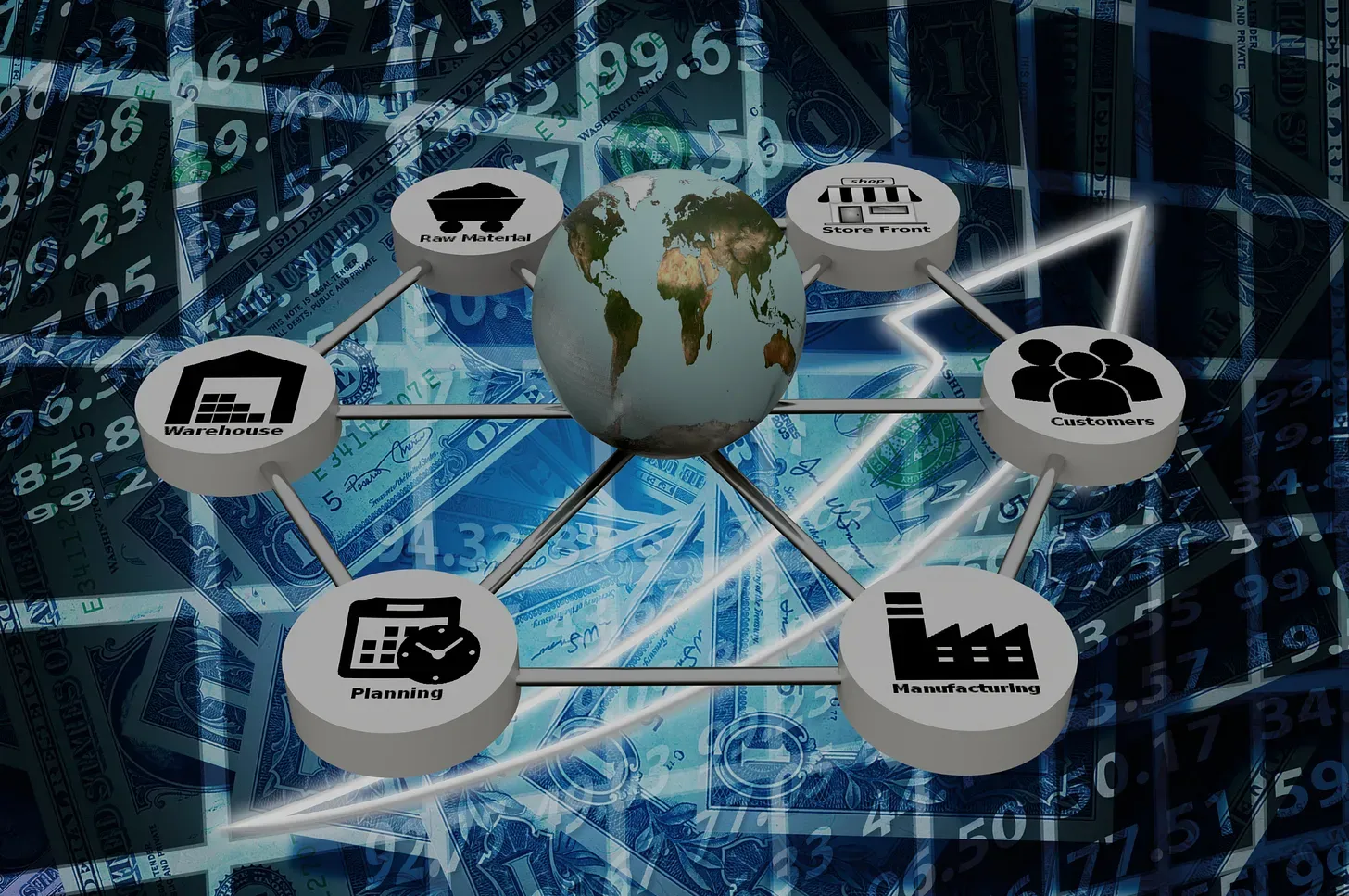
🌐 Inflation Fears Rise. Paper Supply Falls.
Building better understanding of global supply chain woes...and subsequent inflation.
Author’s note (2021)
The following was written prior to news about issues with the transportation system making it harder to get goods across the international economy. These delays only exacerbate the delays in the analysis below, making the impacts of the time delays described here even worse. This is what we’re experiencing.
Author’s note (2025)
Since this article was written, the world experienced long term inflation — as expected. The US managed to bring inflation under control faster. The analysis still holds regarding structural causes of supply / demand imbalances and inflation.
NY Times Headline: The World Is Still Short of Everything. Get Used to It.
US News Headline: Delta, Inflation Fears Push Consumer Sentiment Down Sharply in August
If you tune in to the Sunday morning economic pundits you’ll hear differing opinions about inflation. It’s here. It’s coming. It’s the current President’s fault. No, it’s the previous President’s. What’s going on?
Meanwhile…
A writer friend of mine—excited to be publishing their third book—lamented the other day, “I never thought I’d try to sell a new book in a time when printing paper was hard to find.” You’d think in a digital age there would be plenty of paper. Why the paper shortage? (Just today, Costco announced a purchase limit for toilet paper similar to 2020’s.)
Perhaps most important of all: How might these seemingly disparate issues be related?
SYSQ CAN ILLUMINATE
Systemic Intelligence (SysQTM) is the capacity to frame and analyze issues in ways that can generate maximum insight—which is the only way to identify optimal solutions. One of the core principles of SysQ is to Build a Shared Map of the territory of interest—a picture of the systemic structure driving the system’s performance. Another principle is to Focus on the Physics—make sure the map’s proposed causal connections are consistent with reality.
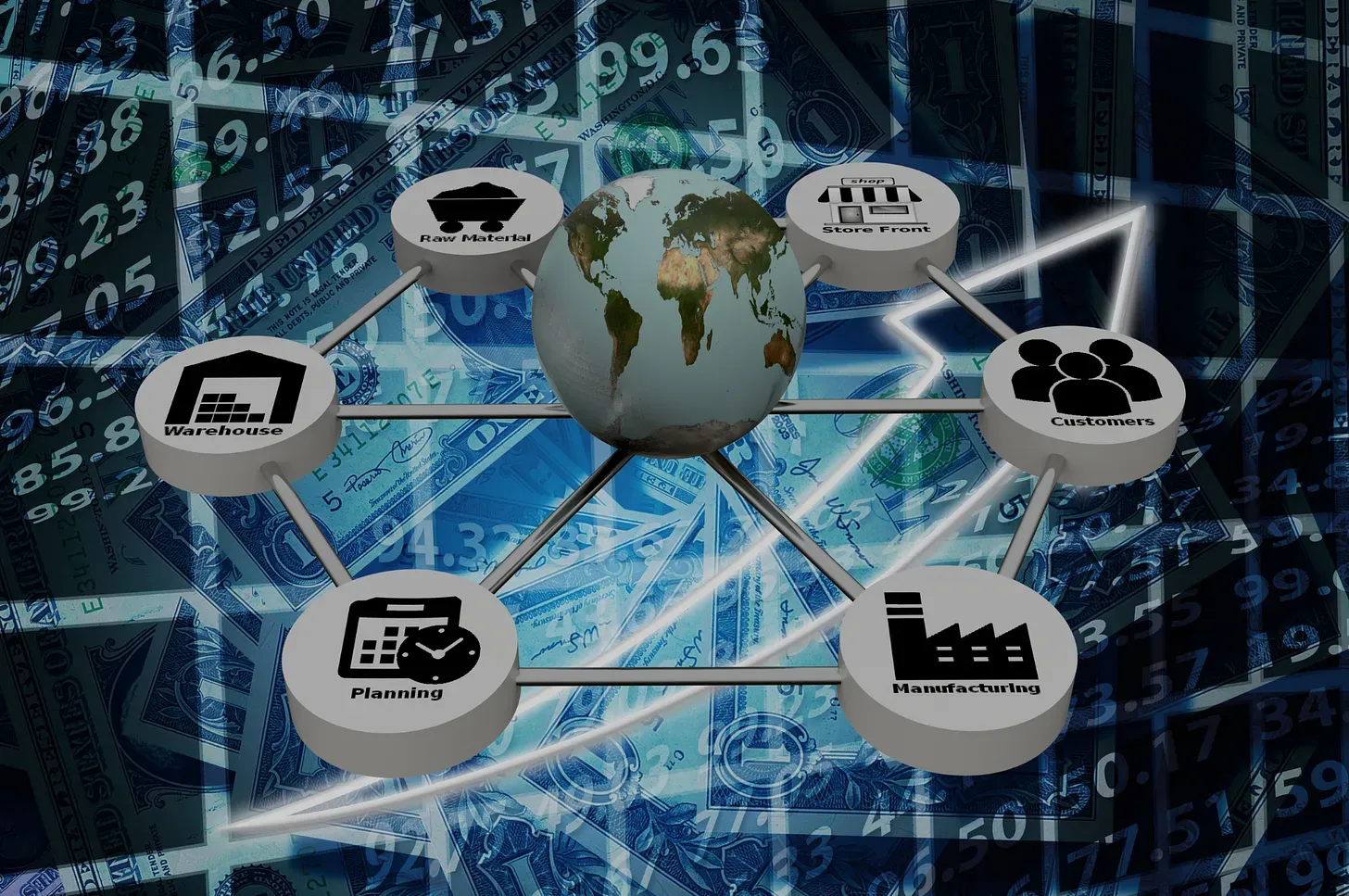
THE BASICS OF SUPPLY AND PRODUCTION
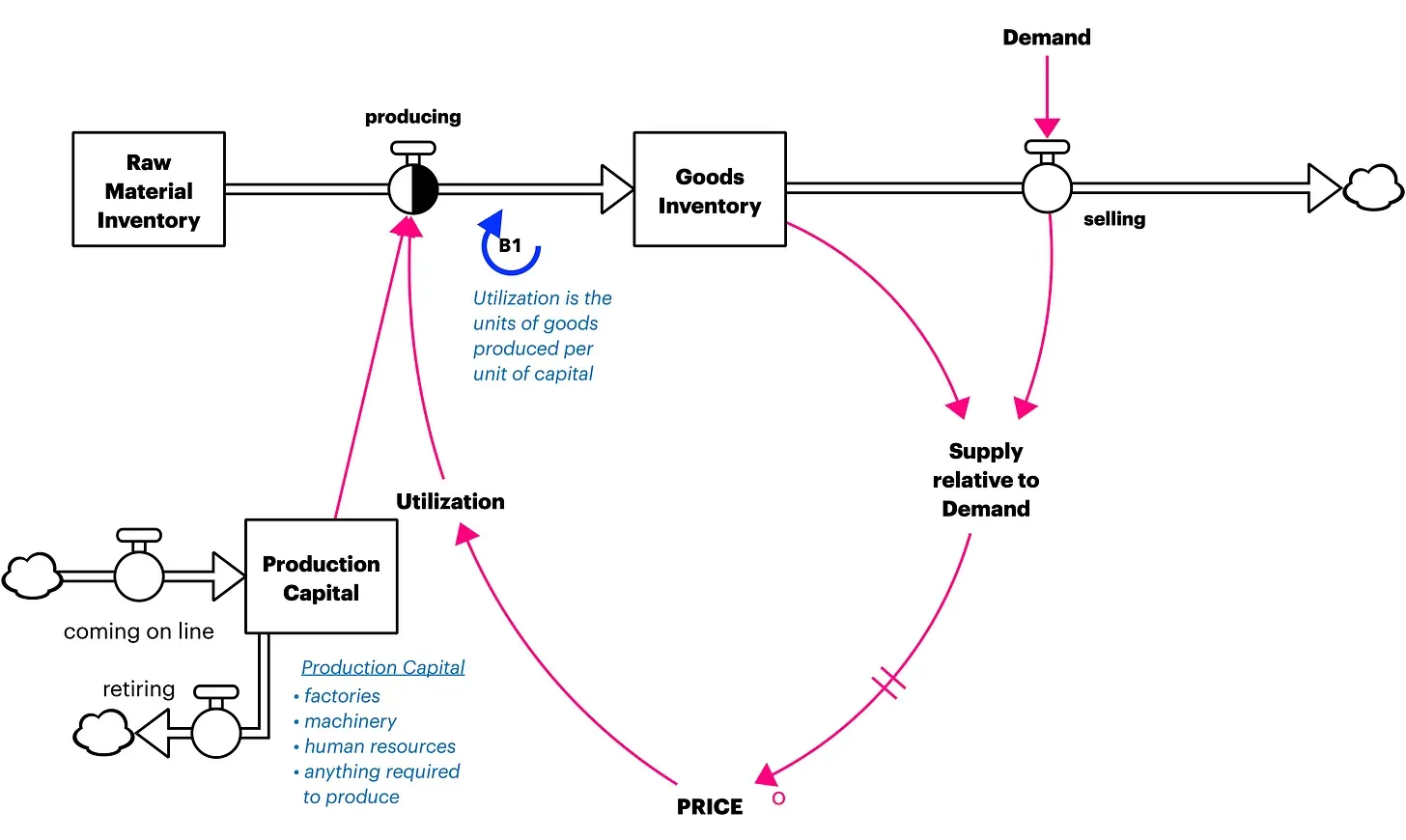
A 30,000 meter view of any industry might look like the map above. At any point in time, you can count up the current amount of goods in the Goods Inventory stock. The stock is like a bathtub. It accumulates inventory.
What fills it up each week is the amount of producing (production) that week. This inflow of producing is like the spigot into a bathtub. The valve (on top) determines how fast or slow the bathtub of Goods Inventory fills. On the outflow, Consumer Demand determines how much selling (inventory sold per week) occurs weekly. If Demand increases, the rate of selling goes up. Lower Demand reduces the rate of selling.
Bathtub physics dictate that Goods Inventory goes up anytime the rate of producing exceeds the rate of selling. The only time Goods Inventory decreases is when selling exceeds producing.
The B1 indicates a balancing loop. Balancing Loops try to maintain equilibrium. If Goods Inventory declines, Price rises, utilization increases, Goods Inventory bounces back…and Price decreases again.
INCREASING THE CAPITAL STOCK INCREASES PRODUCTION
Producing occurs from applying Production Capital. Production Capital is also a stock, because you can stop time and in that moment count up the total amount of capital available. The rate of producing (units of goods produced / week) is determined by Production Capital * utilization (units of goods produced / unit of capital / week). To produce more requires increasing either the amount of Production Capital or its utilization (productivity) of capital—or both.
The binary shading of the producing flow indicates that there’s not a 1:1 conversion of raw material units into units of goods. One computer (a good) requires thousands of parts (raw materials like chips, boards, wires, etc…).
When Goods Inventory is running low, and especially when Price is high and industry profitable, organizations will order more raw materials, increase utilization and/or invest in new capital.
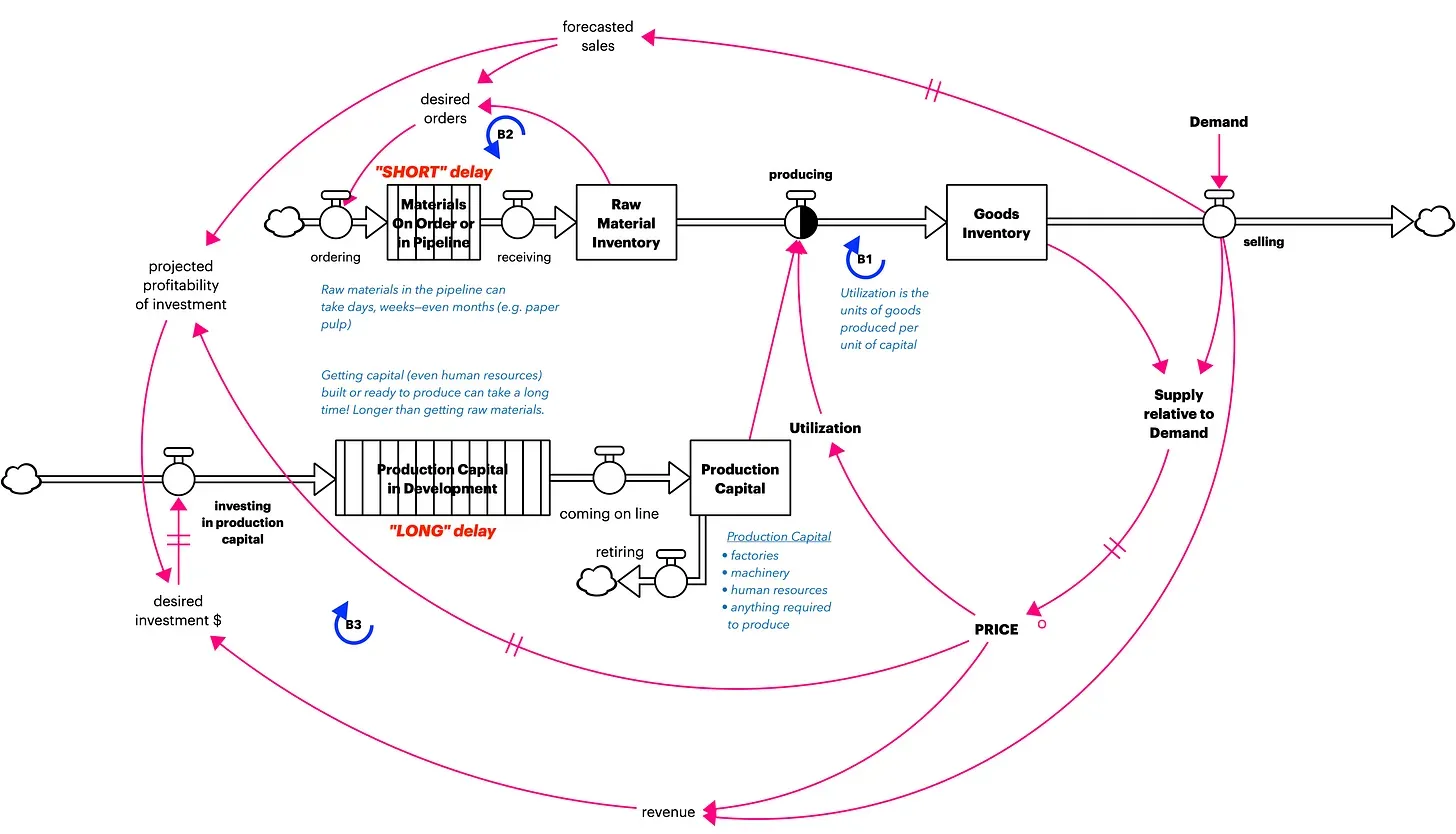
NOTE: It’s often easier—and takes significantly less time—to increase productivity (aka utilization) than to add Production Capital. Adding capital usually requires a flow (activity) of investment in production capital. That capital then steps onto a development conveyor and doesn’t actually become available to produce for a while. Sometimes this time delay takes months.
SUPPLY RELATIVE TO DEMAND—>PRICE
If Demand increases, the rate of selling increases, drawing down Goods Inventory. The Supply relative to Demand falls; Price will increase.
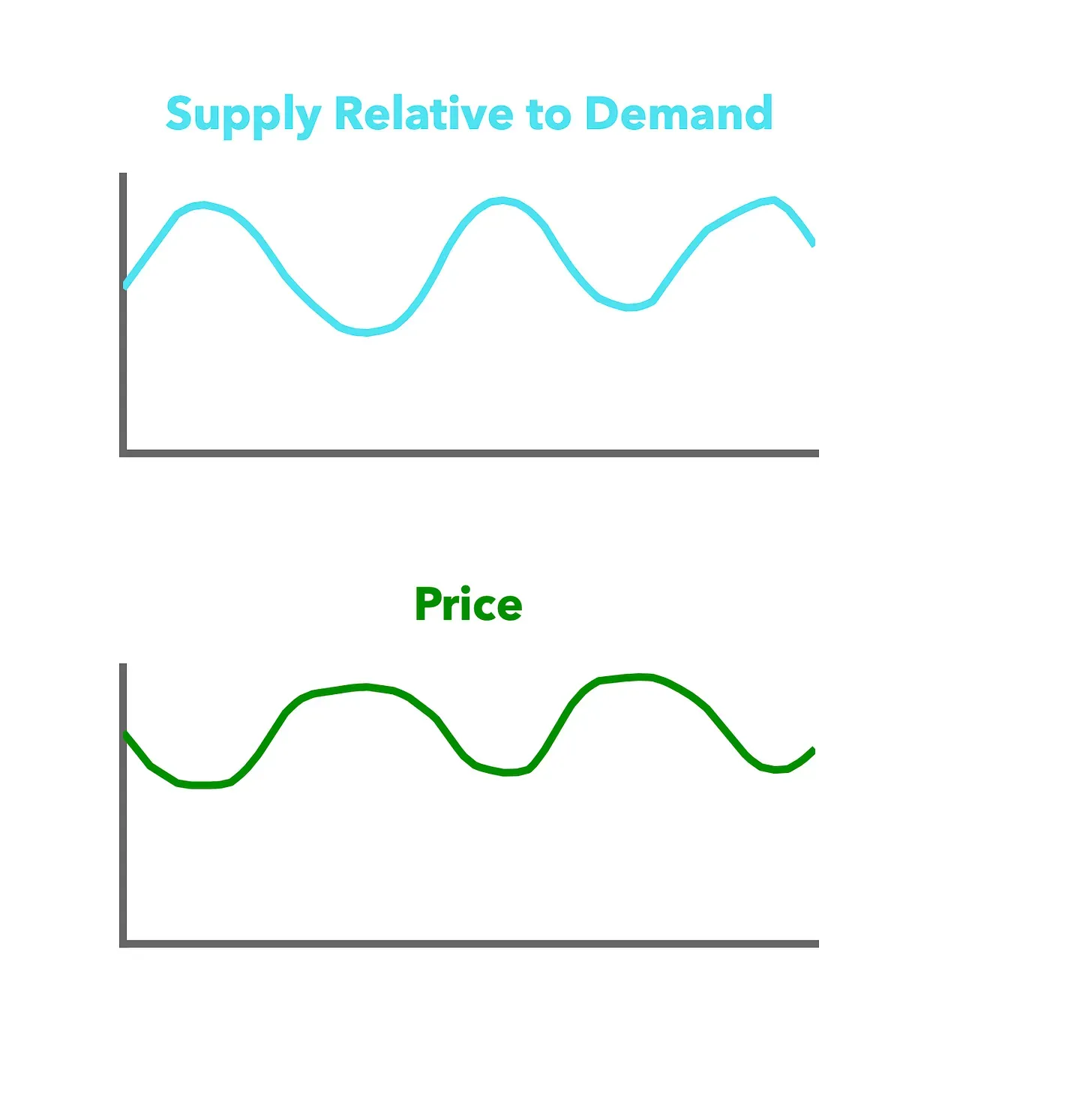
A producer typically responds by increasing utilization (units of goods produced per unit of capital) in order to produce more, filling up Goods Inventory, and bringing supply and demand back into balance. Price usually stabilizes to previous levels. Sometimes, producers will invest in new capital to increase production. This requires a much longer time horizon in order to implement.
**WHY INFLATION? WHY SUPPLY SHORTAGES? AT THE SAME TIME?**
Under most situations, these balancing loops work to regulate the market so that production, inventories, and price oscillates around equilibriums—often with a little annual growth to create an upward sloping curve.
A Sustained Shock
But what happens occasionally are sustained shocks to a system. For example, if there’s a broad and sustained shock to demand (e.g. a lockdown), the following might occur.
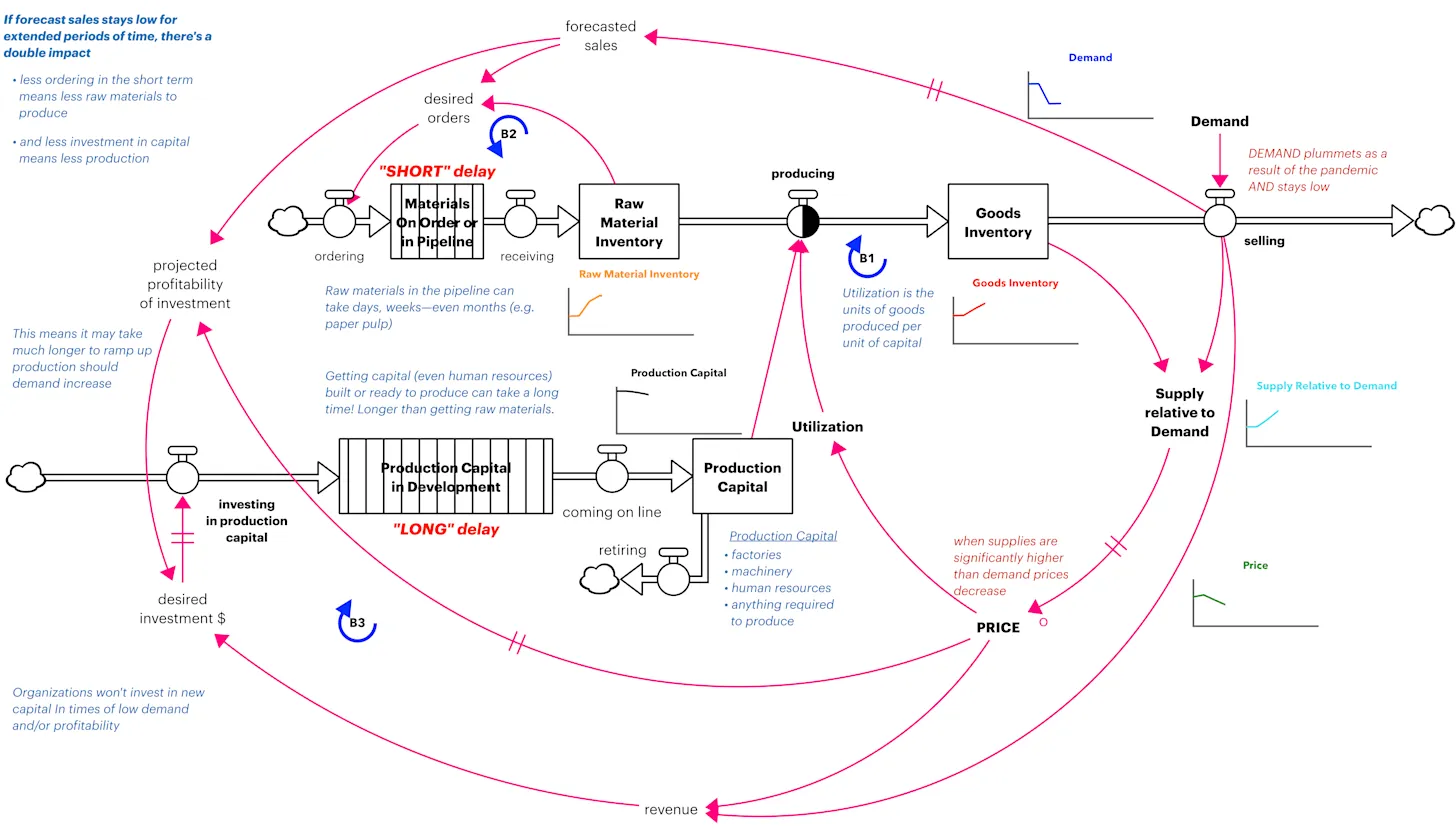
Demand (blue trend) plummets and stays low. Supply relative to Demand begins to creep up (as unsold inventories increase). Too much supply causes Price to drop (or at least not increase anymore).
All of these reduce short-term utilization and materials ordering. This means less harvesting of trees, less of simple materials that are components to chips and computers, less of the basics. There will be less Raw Material Inventory (orange trend)
Further, Production Capital naturally retires, so the stock diminishes (or certainly doesn’t grow).
Demand Returns, But System Remains Behind
If Demand suddenly returns, the system can’t adjust back to normal immediately. Because Goods Inventory is now insufficient for this increased Demand, Supply relative to Demand decreases, and Price increases.

Utilization, ordering, and investing in production capital increases. But due to the long time delays—some delays are substantial—Price continues to rise as Supply relative to Demand remains low.
And INFLATION!
Inflation Continues
Inflation (increasing Price above wage increases) will continue for a long time as the system tries to recover…especially if Demand continues to remain high. The long pipeline delays ensure this dampening of inflation takes time.
Solutions?
What will address this shortage combined with inflation? The main national lever works on demand. The strongest lever is the natural one: Price—>Demand. Yes. Prices will eventually go high enough to naturally suppress demand. As selling slows, inventories can catch up, and Price will fall (or stop rising as fast).
Policies that could slow demand sooner might include short term taxes on some (perhaps luxury) items that require a lot of raw materials. This would increase actual Price faster than inflation and put the brakes faster. Plus, luxury items taxes wouldn’t negatively impact those suffering the most. And if the tax was reinvented in ways that increase the development of supporting infrastructure and capital, then the system would rebound faster.
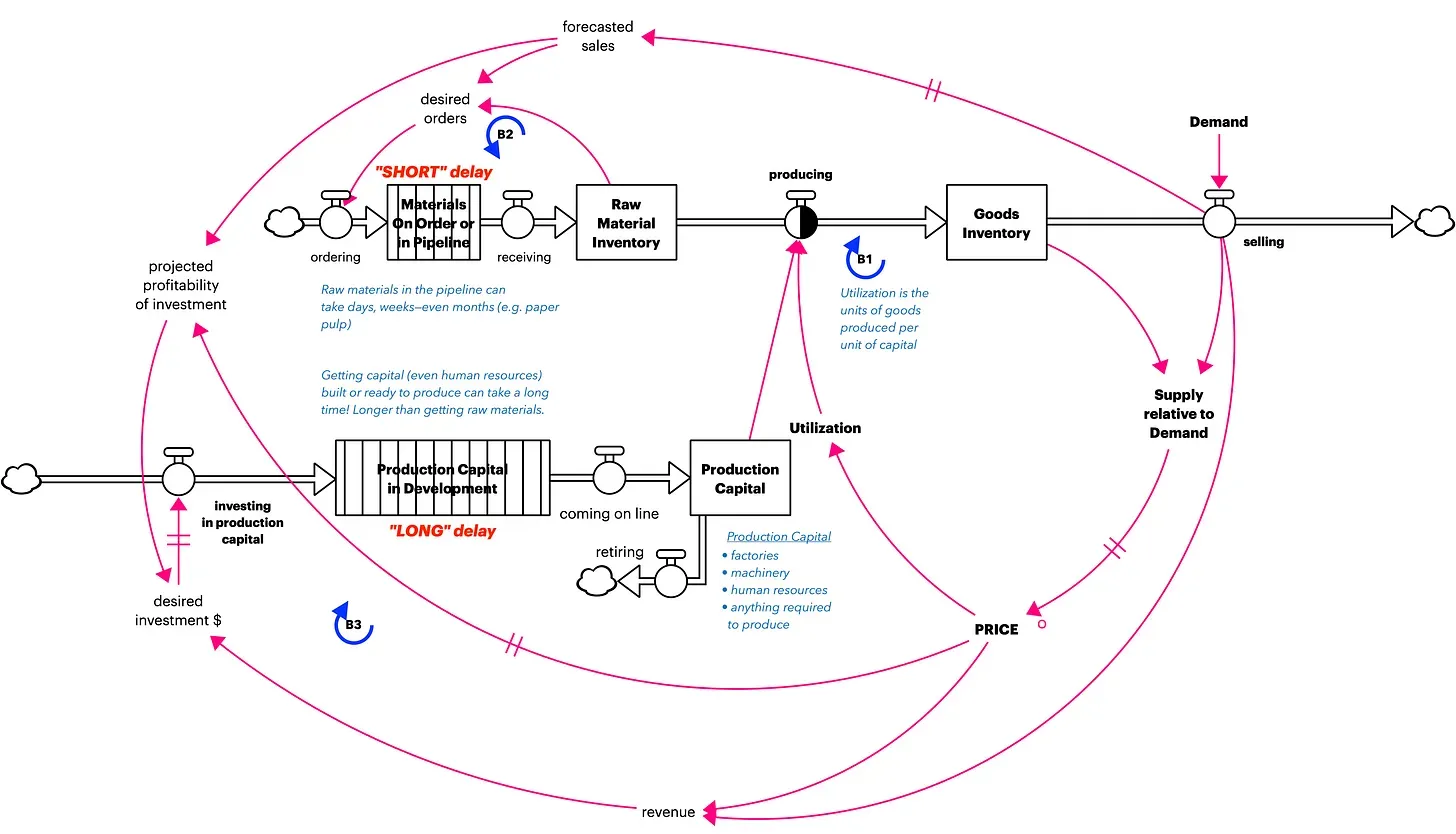
Additionally, there could be incentives to industries to invest in capital even when their forecasts don’t encourage them to do so. Incentives to add supporting infrastructure or invest in employee development would pay off in the medium to short term.

IMPLICATIONS
What happened in 2020 was unique in that Demand was suppressed suddenly (lockdowns) and for a longer time than typically. This means that rising inflation now is absolutely to be expected. So, who’s to blame?
The current President wasn’t responsible for the 2020 sudden and sustained decrease in Demand. And the previous President, although a different way of handling the pandemic might have reduced the impact on Demand, isn’t responsible for the way the market is now responding to reinvestment to bring production back up to previous levels.
Key Insight
Today’s macroeconomic performance is rarely the result of decisions made within the past few months. Using a longer term mental model of the structure generating performance will increase our ability to assess any attributions of “who’s to blame?”







